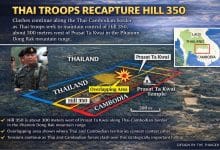Phuket lifestyle: Diving without water

PHUKET: Divers take water for granted, be it mucky water, cold water, beautiful Phuket water or even pool water. We presume there will be water when we dive. So my last dive, a “dry” dive at 18 meters in a sub-aquatic safety services (SSS) recompression chamber, was a novelty.
Recompression chambers, also known as hyperbaric chambers, have been used to treat a variety of ailments since the 1600s. By the 1930s the US Navy was successfully using hyperbaric oxygen therapy (HBO) to treat deep-sea divers for decompression illnesses (DCI).
DCI, or “the bends”, is a key ingredient to most dive horror stories. There is the mental image of a diver panicking and bolting for the surface. As they rise, the pressure from the water above slackens and nitrogen bubbles in their blood and tissue begins to rapidly expand. On the surface the diver, in extreme pain, has skin that crackles to the touch and the fatty tissue around their hips and stomach starts to “marble”.
In reality very few DCI cases are anything like this. Often symptoms of DCI are so minor that they are ignored for days and are easily treated in a recompression chamber. Why in some cases certain individuals suffer from DCI and others don’t, despite both of them having followed the dive plan and having “good dives”, is unclear to scientists.
Luckily, DCI is rare enough that in a sport with millions of participants, not every dive professional has had experience dealing with it. So as part of the Sea Bees professional training program their students visit Patrick Schindler, SSS Hyperbaric Chamber Operations Manager, on site for a lecture on DCI symptoms and to experience a short dive in the chamber.
After being momentarily befuddled by our all-cotton fisherman pants (synthetic fabrics, which could possibly create a spark from static electric charge, are a fire risk under pressure), three “dive buddies” and I pile into the chamber with a SSS Recompression Chamber Network Assistant.
Once into the main room of the chamber the door behind us was securely shut. It’s cramped quarters for five guys, but once situated on the two beds the assistant flicks a switch and gives the go-ahead to start the dive.
Immediately there is an uncomfortable pressure on our ears. The depth gauge’s needle hovers at six feet. We’re constantly having to equalize, despite our slow descent.
Coupled with the pressure in ours ears is the heat. The little chamber feels like a sauna. It isn’t a stifling heat, but it’s uncomfortable. The heat isn’t from our bodies, but from the active air molecules being packed more densely as we descend.
We pause our descent and the air in the chamber is flushed, cooling the room and thankfully sweeping a little body odor out with it.
With the chamber air feeling fresher, we make our final descent to 18 meters.
Bottom time: a sheet is dragged across the inside of the chamber door as a screen and the projector outside starts playing the World War Two submarine film, U-571, to enhance the ambiance.
Snacks and cookies, are passed through the medical lock, which is also used to pass paperwork to the patients.
About 15 minutes into the movie, it’s time to start our ascent. It’s a much shorter dive than the four-hour dives that most patients receive as part of their treatment.
Back on the surface and slightly disappointed that I didn’t get to breath 100 per cent oxygen like a patient, I tried to figure out if this were the sort of dive I could log in my book or not.
If you have general questions about scuba diving or freediving in the Greater Phuket region, you can contact me at anytime at Isaac@PhuketGazette.net.
— Isaac Stone Simonelli
Latest Thailand News
Follow The Thaiger on Google News:


























